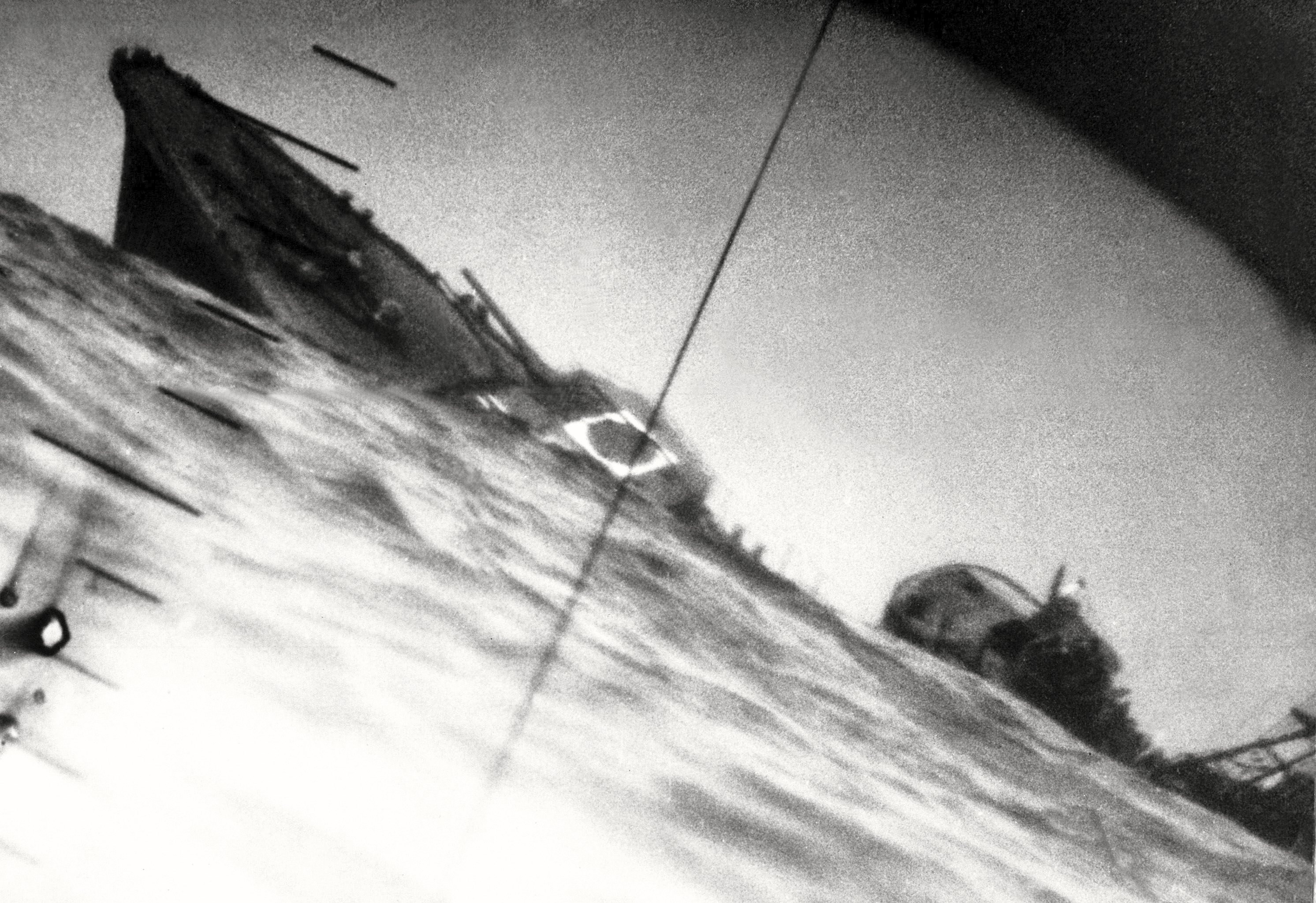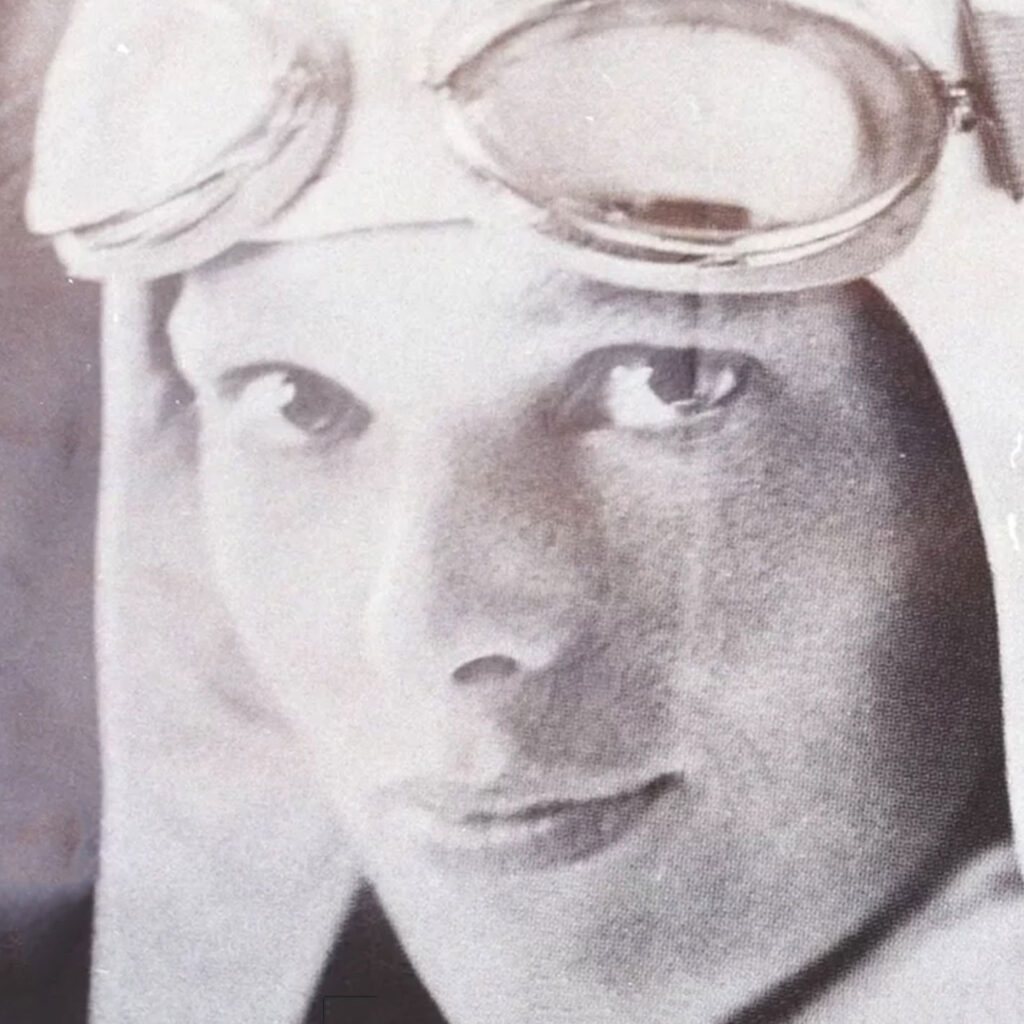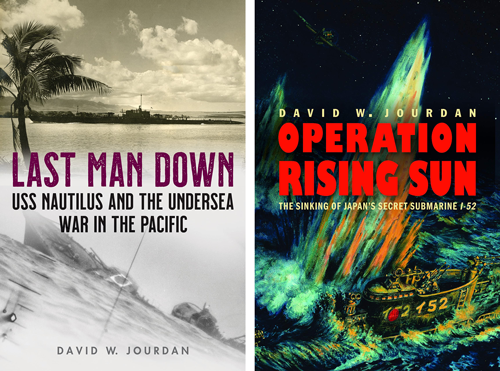Richard Barr (Ozzie) Lynch, Torpedo and Gunnery Officer, USS Nautilus (SS-168)
Ozzie Lynch was born August 12, 1914, in Citronelle, Alabama. He graduated from the U.S. Naval Academy at Annapolis, Class of 1935.
During the June 1942 Battle of Midway, Lynch was stationed in the conning tower as the TDC (torpedo data computer) operator, responsible for computing the torpedo firing solution and launching weapons. Lynch was an avid photographer, and owned a 16 mm movie camera and a still camera which he brought on patrols, capturing scenes of life aboard Nautilus. Lynch devised a scheme to attach his still camera to the periscope, and thus captured one of the most compelling photos of the war as the destroyer Yamakaze, torpedoed by Nautilus, slipped below the waves with the Rising Sun displayed on the forward gun turret and sailors scrambling to abandon ship. This image was published in the August 3, 1942, issue of Life Magazine, and as one of the year’s outstanding photographs, and in the December 1942 issue of U.S. Camera under the title “Doom of Jap Warship.” As related by shipmate Red Porterfield:
“After the battle [of Midway] we went back in and reloaded torpedoes and supplies and departed for the [Japanese] Empire. Our first patrol was right off Tokyo. We torpedoed a brand-new destroyer that was out making trial runs. We had an officer on board by the name of Ozzie Lynch who was quite a photographic bug, so as this destroyer was sinking he put a camera to the periscope and we got a very good picture of it that made Life Magazine. Over a few years after World War II, I saw the picture several times associated with different subs!—but it was the Nautilus.”

When Nautilus was assigned to reconnoiter the beaches of Tarawa and surrounding islands before invasion, Lynch, unable to make navy-issued cameras work, used his personal camera to capture panoramic images of the enemy coastline. In later operations, Lynch filmed the submarine diving, and later recorded scenes of Honolulu, Midway Island, VJ Day celebrations, and other historic locales and events. His periscope photo of Mt. Fuji also appeared in Life Magazine in the May 1943 edition.
Lynch went on to command the submarine USS Seawolf (SS-197) and later USS Skate (SS-305) on which he won the Navy Cross for valor on patrol in the Sea of Japan. Leading Skate into the shallow waters of an enemy harbor, he succeeded in sinking five ships with torpedoes and evading enemy countermeasures. His patrol ended in July, 1945, just a month before war’s end.
Lynch continued his naval career after the war, in time advancing to rear admiral and serving with the Joint Chiefs of Staff. His final assignment saw him coordinating the successful recovery of the first unmanned Apollo spacecraft on November 9, 1967.
Rear Admiral Ozzie Lynch died of a heart attack while on active duty and departed on eternal patrol on January 19, 1968, at the age of fifty-three.



